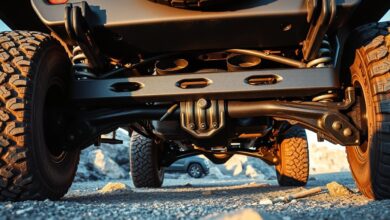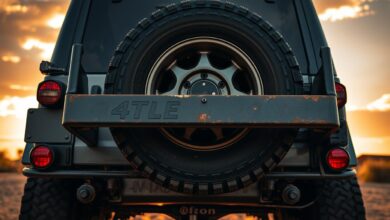How to Choose the Right Roof Rack for Your 4×4 Vehicle
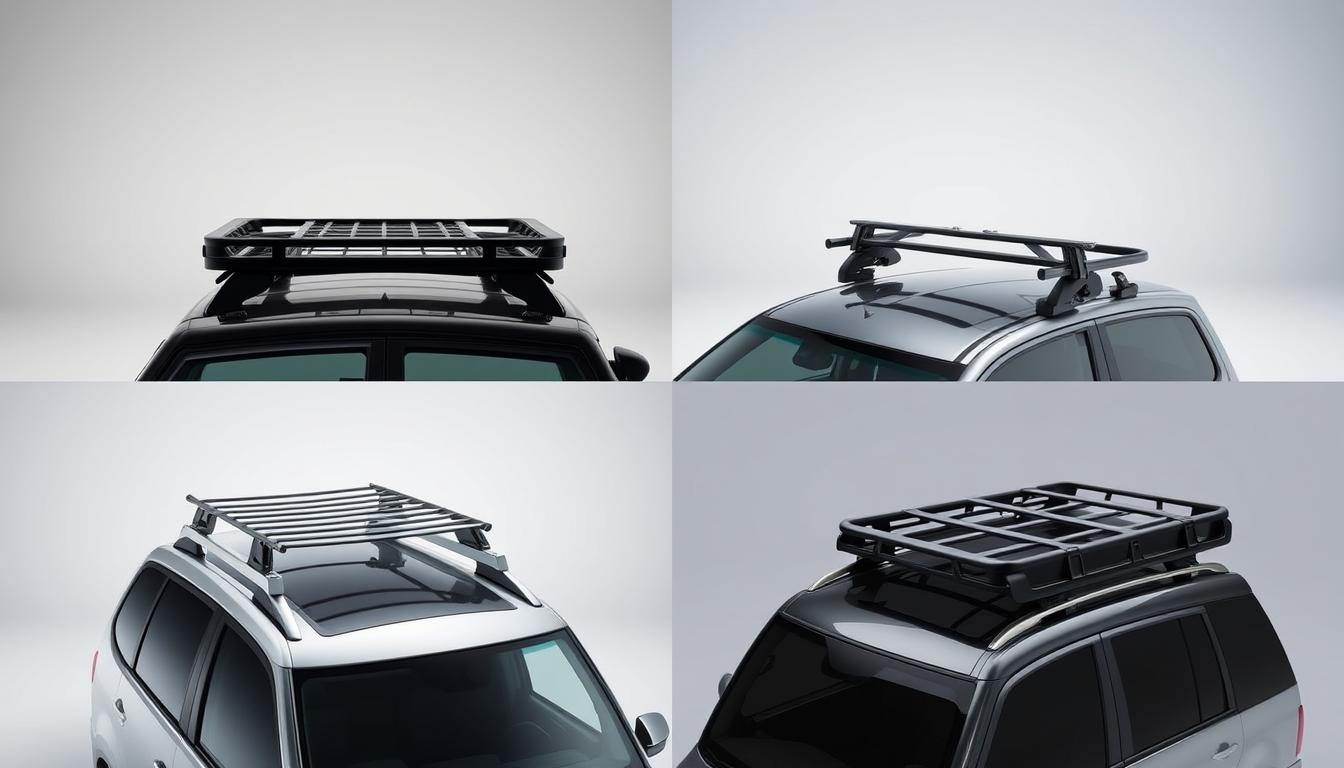
Choosing the right roof rack for your 4×4 vehicle is key for great adventures. But, with many options, picking the best can be hard.
First, know what you need and what gear you’ll carry. A good roof rack can change your off-road trips or add storage. For a detailed guide, visit United4x4’s roof rack buying guide.
Key Takeaways
- Determine your vehicle’s compatibility with different roof rack systems.
- Consider the type of gear you plan to carry and the weight capacity required.
- Choose a roof rack that suits your vehicle’s roof type and your needs.
- Look for high-quality materials like aluminium for durability and resistance to corrosion.
- Ensure the roof rack is installed correctly for safety and aerodynamics.
Understanding the Purpose of a Roof Rack
A roof rack is more than just an accessory for your 4×4 vehicle; it’s a game-changer for outdoor enthusiasts. According to Rhino-Rack, a roof rack provides a space-saving alternative for carrying cargo and equipment. It lets you mount large and unwieldy items that won’t fit inside the vehicle.
What is a Roof Rack?
A roof rack is a system designed to carry equipment and cargo on the roof of a vehicle. It typically consists of crossbars that are mounted on the vehicle’s roof. These crossbars provide a base for attaching various accessories like cargo carriers, bike racks, or roof baskets.
Common Uses for Roof Racks
Roof racks are incredibly versatile and can be used for a variety of purposes, including:
- Carrying camping gear, such as tents and sleeping bags
- Transporting bicycles, kayaks, or other outdoor equipment
- Storing luggage or cargo for long road trips
- Mounting roof-top tents or other adventure gear
For off-roading enthusiasts, a roof rack can be very useful. It provides a secure way to transport gear to remote locations.
Benefits of Using a Roof Rack
The benefits of using a roof rack are numerous. It frees up interior space in your vehicle. It also provides a secure and stable way to transport large or awkwardly shaped items. As noted by industry experts, “A good roof rack system can significantly enhance the functionality of your 4×4 vehicle, making it an ideal solution for those who enjoy outdoor activities.”
“A roof rack is an essential accessory for any serious off-roader or outdoor enthusiast, providing the flexibility to carry a wide range of gear and equipment.”
By choosing the right roof rack for your 4×4 vehicle, you can enjoy greater flexibility and convenience on your adventures. Whether that’s off-roading, camping, or simply road tripping, a roof rack makes a big difference.
Types of Roof Racks Available
Roof racks for 4×4 vehicles come in different types. They cater to various needs and preferences. The right choice depends on your specific needs, vehicle specs, and personal taste.
Fixed Racks vs. Removable Racks
Fixed roof racks are permanently attached. They offer a strong and reliable way to carry heavy loads. They’re perfect for those who use their roof rack often.
Removable roof racks, on the other hand, are flexible. You can install and remove them as needed. ARB has a range of both fixed and removable roof racks for 4×4 vehicles.
Fixed racks have several benefits:
- They provide stability and security for heavy loads.
- They are durable and resistant to wear and tear.
- They give a sleek, integrated look with the vehicle.
Removable racks offer:
- Flexibility for occasional use.
- Ease of installation and removal.
- The ability to share or transfer the rack between vehicles.
Roof Baskets
Roof baskets are great for carrying bulky or irregularly shaped items. They offer a spacious, open platform for easy access. Roof baskets are perfect for off-road adventures where gear needs to be easily loaded and unloaded.
Key features of roof baskets include:
- Ample space for carrying large or bulky items.
- Ease of loading and unloading gear.
- Durable construction to withstand various weather conditions.
Cargo Carriers
Cargo carriers provide extra storage space for luggage, equipment, or other items. They are enclosed, protecting contents from the elements. Cargo carriers are ideal for road trips or daily commutes where extra storage is needed.
The advantages of cargo carriers include:
- Aerodynamic design to reduce wind resistance.
- Protection of contents from weather conditions.
- Additional security features to prevent theft.
When choosing a roof rack, consider your specific needs. Think about your vehicle, intended use, and the gear you plan to carry. Understanding the different types of roof racks helps you make an informed choice that fits your lifestyle and preferences.
Compatibility with Your 4×4 Vehicle
Finding the right roof rack for your 4×4 vehicle is key. It’s important to make sure the roof rack fits your vehicle’s make and model. This ensures safety and function.
Checking Vehicle Specifications
First, check your vehicle’s specs. Know the type of roof it has, like a bare roof or raised side rails. Look in your vehicle’s manual or on the manufacturer’s website for details. Some vehicles have special mounting points for roof racks. Using these points is vital for a safe installation.
Considerations for Roof Railing
If your 4×4 has roof rails, pick a roof rack that fits these rails. Some racks attach directly to the rails, while others need adapters. Choose a rack that matches your vehicle’s railing system for a secure fit.
Identifying Weight Limits
Weight limits are also important. Going over these limits can damage your vehicle or cause accidents. Find out your roof’s maximum weight and make sure your rack can handle it. This info is in your vehicle’s manual or on the manufacturer’s website.
Think about the gear you’ll carry when choosing a roof rack. For heavy items like ladders, you’ll need a rack with a high weight capacity. Always check the rack’s specs to meet your needs.
By checking your vehicle’s specs, roof railing, and weight limits, you can find the right roof rack. This improves safety and lets you carry your gear confidently.
Materials Used in Roof Racks
Choosing the right roof rack is key for off-roading. The material used affects the rack’s durability, weight, and performance.
Aluminum vs. Steel
Roof racks are often made from aluminum or steel. Aluminum is light, which helps save fuel and reduce vehicle weight. Steel, on the other hand, is strong and durable, ideal for heavy use.
Think about what you need. Aluminum is great for those who want easy handling and better fuel efficiency. Steel is best for those needing maximum strength and durability.
Advantages of Composite Materials
Composite materials, like fiberglass-reinforced nylon, are also used. They offer a mix of strength and lightness. Rhino-Rack uses aluminum and fiberglass in their racks, making them strong yet light.
Composite materials are durable, resistant to corrosion, and can handle harsh weather. They’re a good choice for a reliable, long-lasting roof rack.
Loading Capacity and Weight Distribution
To ensure safe and stable transportation, it’s essential to understand the loading capacity of your roof rack. The loading capacity refers to the maximum weight that your roof rack can safely carry.
Determining Loading Capacity
To find out the loading capacity of your roof rack, first check your vehicle’s manufacturer’s guidelines. The manufacturer’s specifications will tell you the maximum weight limit for your roof rack. Also, think about the type of items you plan to carry and their total weight.
United4x4 says it’s key to know the total weight of the items you’ll carry. Make sure the roof rack can handle it. You can find the total weight by adding up the weights of all items you plan to transport.
| Item | Weight (kg) |
|---|---|
| Camping Gear | 20 |
| Luggage | 30 |
| Sports Equipment | 15 |
| Total | 65 |
Best Practices for Weight Distribution
Proper weight distribution is key for stability and safety during travel. To get the best weight distribution, spread the weight evenly across the roof rack. Don’t put all heavy items on one side, as this can cause imbalance and accidents.
Tips for better weight distribution:
- Put heavier items in the center of the roof rack.
- Spread lighter items around the heavier ones.
- Secure all items properly using tie-down straps or cargo nets.
By knowing the loading capacity and following best practices for weight distribution, you can have a safe and fun journey with your 4×4 vehicle.
Installation Considerations
To get a roof rack installed right, you need to think about a few key things. The steps can change a lot based on the roof rack type and your 4×4’s needs.
DIY Installation vs. Professional Help
Some roof racks are easy to put on yourself, but others need a pro. United4x4 says it’s important to check the mounting system is solid and safe. If you’re not sure you can do it right, getting a pro is safer for your vehicle.
“A bad roof rack install can be dangerous,” experts warn. So, knowing your vehicle and the roof rack’s needs is key.
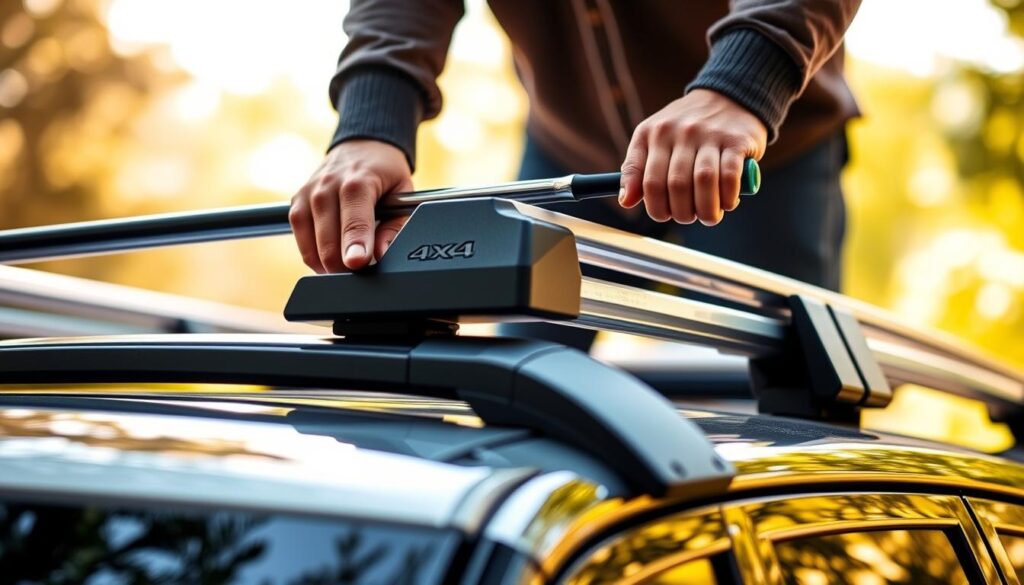
Essential Tools for Installation
Having the right tools is critical for a good install. You’ll likely need a drill, sockets, and wrenches. For tougher jobs, you might need special tools. Check the maker’s guide or a roof rack buying guide for what you’ll need.
Key tools to consider include:
- A drill for making precise holes
- Sockets and wrenches for tightening and loosening bolts
- Measuring tape for accurate measurements
- Level to ensure the roof rack is properly aligned
Being ready with the right tools and knowledge helps you install your roof rack safely and well.
Roof Rack Accessories to Consider
Adding the right accessories to your roof rack can really boost your off-roading fun. Whether you’re hauling bikes, camping gear, or luggage, the right gear makes a big difference. It’s all about making things easier and safer.
Tie-Down Straps
Tie-down straps are key for keeping your gear secure on the roof rack. They come in different lengths and types, like ratchet straps and cam buckle straps. Using high-quality tie-down straps means your stuff stays put, even on bumpy off-road paths.
- Rachet straps for tight securing
- Cam buckle straps for easy adjustment
- Elastic bungee cords for flexible securing
Cargo Nets
Cargo nets add an extra layer of safety for your gear. They’re great for odd-shaped items or keeping things together. Cargo nets are flexible and work well with tie-down straps for the best protection.
Security Locks
For extra safety, think about getting security locks for your roof rack. These locks help prevent theft and give you peace of mind when parked in unknown spots. Many brands, like Rhino-Rack, offer security lock options that fit their racks.
- Cable locks for securing to fixed points
- Combination locks for keyless security
- Anti-theft locks designed for roof racks
Choosing the right roof rack accessories can improve both function and safety. Whether you’re off-roading or just need more space for a trip, these accessories can really help.
Design and Aesthetics
A roof rack is more than just a useful tool; it’s a design feature that can make your 4×4 look better. When picking a roof rack, think about how it will look with your vehicle. It’s important to choose one that matches your car’s style.
Choosing a Style that Matches Your Vehicle
ARB’s roof racks are designed to look good and work well. They should match your 4×4’s style. For example, a tough 4×4 might look great with a strong roof rack. A city car might look better with something sleek and simple.
When looking at different roof racks, think about what you want your car to look like. You can choose from:
- Rugged and industrial designs for off-road vehicles
- Sleek and minimalist designs for urban vehicles
- Customizable designs that allow for personalization
Color Options and Finishes
You can also pick the color and finish of your roof rack to match your car. Many makers offer lots of colors and finishes, like matte black or glossy silver. This way, your roof rack will look good with your car.
For example, if your 4×4 is a bold color, you might want a roof rack that matches or contrasts it. Some popular colors include:
| Color Option | Description |
|---|---|
| Matte Black | A sleek, non-reflective finish that suits most vehicles |
| Glossy Silver | A shiny, reflective finish that adds a premium look |
| Vehicle Match | A color-matched finish that ensures the roof rack blends with your vehicle’s paint job |
A leading designer in the car world says, “The look of a car isn’t just its original design. It’s also about how accessories like roof racks fit into its overall look.”
“A well-designed roof rack can enhance the overall appearance of a 4×4, making it look more purposeful and adventurous.”
In the end, your roof rack’s design should match your style and your car’s look. By picking a roof rack that complements your 4×4, you can make it look better and more complete.
Cost Factors to Keep in Mind
Choosing a roof rack for your 4×4 vehicle involves understanding costs. Prices vary based on the rack type, materials, and extra features.
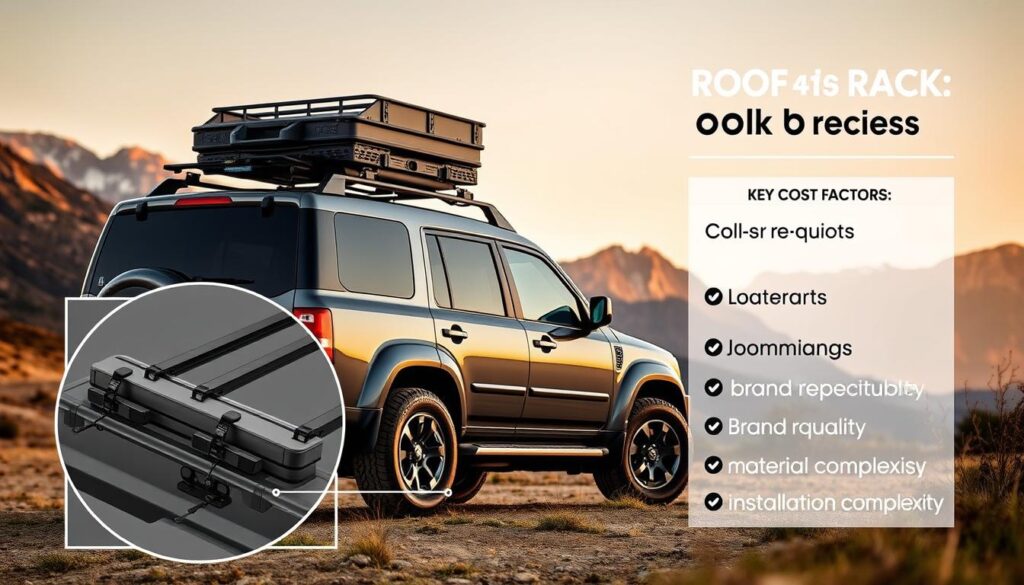
Budget-Friendly vs. Premium Options
United4x4 has roof racks for all budgets. If you want something simple, go for the budget-friendly ones. For more advanced features and durability, choose premium racks.
- Budget-Friendly: Basic functionality, simpler installation, and cost-effective.
- Premium: Advanced features, high-quality materials, and enhanced durability.
For a detailed roof rack buying guide, look at material, weight capacity, and vehicle compatibility.
Long-Term Investment Considerations
Budget-friendly racks might seem good at first, but think about the long run. Premium racks cost more but last longer and need less upkeep.
“Investing in a high-quality roof rack can save you money in the long run by reducing the need for frequent replacements or repairs.”
When comparing roof racks, think about the total cost. This includes any extra accessories like tie-down straps or cargo nets.
Safety Features of Roof Racks
Off-road adventures mean your gear’s safety is key. A good roof rack is your first defense. Having the right safety features on your roof rack is vital for protecting your stuff and your vehicle.
Importance of Security Straps
Security straps are a must-have for roof racks. They keep your gear snug on the rack, stopping it from moving or falling off. Experts say high-quality straps greatly lower the risk of losing or damaging your cargo.
Look for straps made from durable materials that are easy to use. Always follow the maker’s advice on how to tighten and check them to keep them working right.
Stability During Travel
Keeping your roof rack stable is also critical. A stable rack means your gear stays put, even on bumpy roads. To keep it stable, spread your cargo’s weight evenly across the rack.
Rhino-Rack stresses the need for stability, saying “a balanced load is essential for safe travel.” To keep things stable, think about these points:
| Factor | Description | Benefit |
|---|---|---|
| Weight Distribution | Evenly distribute cargo weight | Enhanced stability |
| Cargo Type | Consider size, shape, and weight | Reduced risk of cargo shift |
| Rack Design | Choose a rack designed for your vehicle | Improved compatibility and stability |
By paying attention to these details, you can greatly improve your roof rack’s safety and security.
“A well-designed roof rack is not just about carrying capacity; it’s also about ensuring the safety and security of both the cargo and the vehicle.”
Maintenance and Care for Your Roof Rack
Keeping your roof rack in top shape is key for safe travel. Regular upkeep not only makes it last longer but also keeps it safe to use.
Cleaning Tips
It’s important to clean your roof rack often. This removes dirt and grime that can harm it. Use a mild soap and water, and steer clear of harsh chemicals or rough materials that might scratch or corrode it.
- Use a soft-bristled brush to remove debris from crevices and corners.
- Rinse the rack well with clean water to avoid soap residue.
- Wipe it dry with a microfiber cloth to stop water spots.
Inspecting for Wear and Tear
Regular checks are vital to spot wear and tear early. Look for any damage, rust, or corrosion on the rack’s surface. Also, check the mounting points and hardware for any signs of loosening.
Key areas to inspect:
- Mounting points and hardware for any signs of loosening or damage.
- The rack’s surface for any signs of rust, corrosion, or wear.
- Tie-down straps and other accessories for any signs of damage or wear.
By sticking to these maintenance tips, your roof rack will stay in great shape. This boosts its durability and performance. Regular care is a small price for the safety and security it offers.
Popular Brands to Explore
Choosing a roof rack for your 4×4 is important. Look for brands known for quality. Several brands offer great options for different needs. Compare them to find the perfect fit for your adventures.
Leading Manufacturers
Rhino-Rack is famous for its tough and versatile roof racks. They suit many needs, from carrying cargo to mounting equipment. Thule is also well-known, with a focus on innovation and ease of use. Yakima is another top choice, known for easy-to-use roof rack systems.
When comparing these brands, think about durability, loading capacity, and vehicle compatibility. Research the best roof rack for off-roading to meet your needs. A 4×4 roof rack comparison can guide your choice.
FAQ
What are the key factors to consider when choosing a roof rack for my 4×4 vehicle?
When picking a roof rack, think about if it fits your vehicle. Also, consider what type you need, how durable it is, how much it can hold, and how to distribute the weight. This ensures it’s safe and installed right.
How do I check if a roof rack is compatible with my 4×4 vehicle?
To see if a roof rack fits, check your vehicle’s specs. Look at the roof railing and the weight limits. This makes sure the rack is right for your car.
What are the benefits of using a roof rack for off-roading and outdoor activities?
A roof rack gives you more space and makes your 4×4 more useful. It lets you carry gear for adventures.
What are the differences between fixed and removable roof racks?
Fixed roof racks stay on your car all the time. Removable racks can be taken off when not needed. This gives you flexibility and ease.
How do I determine the loading capacity of a roof rack?
Look at the roof rack’s specs for its load limit. Also, think about how you’ll spread out the weight. This keeps your vehicle stable while moving.
What are the advantages of using aluminum versus steel for roof racks?
Aluminum racks are light and don’t rust. Steel racks are strong and last long. Choose based on what you need.
Can I install a roof rack myself, or do I need professional help?
You can put a roof rack on by yourself if you have the right tools and follow the instructions. But, if you’re not sure, get help for a safe and correct setup.
What accessories can enhance the usability and security of my roof rack?
Things like tie-down straps, cargo nets, and locks can make your roof rack better. They’re great for off-roading and keeping your gear safe.
How do I maintain and care for my roof rack?
Clean your roof rack often and check for damage. Do maintenance as the maker suggests. This keeps it in top shape.
What are some popular brands for 4×4 roof racks?
Brands like Rhino-Rack, Thule, and Yakima are well-liked for 4×4 roof racks. They offer different products with special features. Look into them to find what suits you best.

